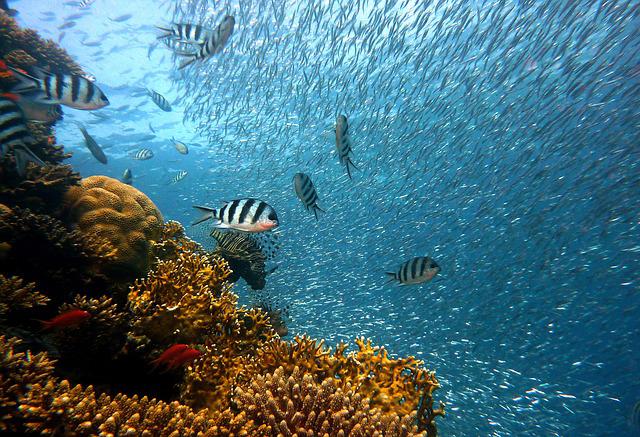Like me, you may be worried about the status of our seas and seafood populations. So, are global fish populations recovering or declining?( https://thebossmagazine.com/no-credit-check-loans/ )
Global fish populations are regenerating. According to new data, about half of the world’s fish populations are recovering or have already recovered and are currently at goal rates. And it’s all because of intelligent fisheries management.
Globally, fisheries are undergoing a remarkable transformation. Continue reading to learn more about sustainable fishing and how it might one day restore all global fish populations.
Sustainable Fishing Rebuilds Fish Stocks
The study paper released by the PNAS (Proceedings of the National Academy of Sciences of the United States of America) reveals the power of sustainable fishing and describes it in depth.
If maximum capture regulations are respected, fish populations tend to recover swiftly and may almost double in size in a few years. If you allow them, fish will repopulate.
According to Luke Pitt, there have been several recent reports on growing levels of overfishing and declining fish supplies globally. Several large-scale fisheries management initiatives have been implemented to reverse this trend.
More favorable publicity for this fishing strategy is needed to help it reach new fisheries and areas.
This illustrates how scientists and fishers can successfully work together to create a sustainable fishing sector. It’s a win-win situation for the commercial fishing business, fishing tourism, and environmental conservation.
Today’s fisheries management measures might restore many more fisheries and fish populations.
It is a tried and tested procedure. Thus assessing its efficacy is superfluous. Instead, it should be implemented as quickly as practicable.
Of course, it takes time, and other things (like climate change) have a part. But if we don’t act now, it could be too late!
Science tells us what to do and how to accomplish it. So, let’s go!
Fishing for Life The Marine Stewardship Council says
The Marine Stewardship Council (MSC) is an organization that strives to incorporate the above science wherever practicable.
According to the Marine Stewardship Council, sustainable fishing means maintaining healthy ocean fish populations, safeguarding natural habitats and ecosystems, and ensuring that those who rely on fishing may continue to do so.
Three primary principles are used to measure sustainability:
- Safeguarding healthy and productive fish populations to ensure that there is always enough fish in the sea
- Lessening the effect of fishing on the ecology and other animals
- Controlling operations and ensuring fisheries can adapt to changing environmental conditions
The Decline of Fish Stocks
The study paper cites effective fisheries management as the critical driver for fish population recovery.
The experts claim that all it takes to keep fish populations stable is to use sustainable fishing practices. Isn’t it simple?
The issue was that this did not apply to global fisheries. Until 1995, fishing pressure had risen dramatically while biomass rates had fallen.
Around this period, the first sustainable fishing efforts began. People wanted to see what would happen to stocks if they reduced extraction rates.
In 2005, biomass rates had risen ten years later. The imagined experiment had become a reality.
From 2012 to 2016, fish biomass exceeded the predicted maximum sustainable production rate in the studied locations (North and South America; Europe; Japan; Russia; Northwest Africa; South Africa; Australia; New Zealand).
This suggests more fish than predicted, but fishing pressure was lower than expected.
Stocks had recovered, fishing activity had decreased, and enough fish was taken to meet consumer demand. Achieved 100% sustainable fishing!
Restoring Most Fish Populations
According to the experts, fish stocks will recover and grow if you establish transparent and fair stock levels and capture rates for fish populations and then maintain your catch limit slightly below that rate.
Other variables may impact stock prices, but this is what has to be done in general.
The scientific data is unmistakable. Fisheries catch rates are three times higher in areas with less established or nonexistent sustainable fishing practices than in regions with extensive fisheries management.
But they only display half the fish populations’ abundance. In other words, they are overfishing and reducing supplies.
Those who practice sustainable fishing techniques have great recovery rates and substantially better abundance rates.
This implies they can capture more fish while fishing less. So the fisheries save time and money. It’s the greatest of environmental news!
Fish Stock Recovery Is Doable Quite Quickly
The report includes earlier research on over 150 fish species with reduced supplies. In under ten years, they all recovered to sustainable biomass rates!
Naturally, recovery rates are slower for individuals with higher depletion but still feasible!
This is great news for Arctic and Atlantic cod, which have long suffered from overfishing. This fish has long been thought of as lost.
Efforts to improve cod fishing sustainability were deemed futile. Fisheries continued until the last cod was captured.
It’s time to put a stop to it. The examples from across the globe illustrate that sustainable fishing is achievable and beneficial. Paragraph
The article finds that thousands of managers, fishers, scientists, NGOs and the Marine Stewardship Council worked tirelessly to improve global fisheries.
Their awareness and call to action have shifted the tide, and I appreciate everyone for their efforts.


:quality(70)/cloudfront-us-east-1.images.arcpublishing.com/tronc/AVP6ZC3BTZDTJDIGTZGHJGC76Y.jpg)








